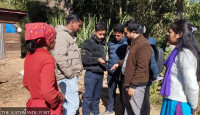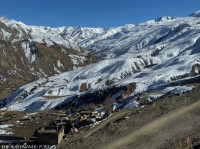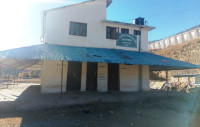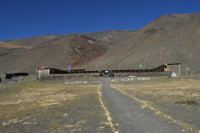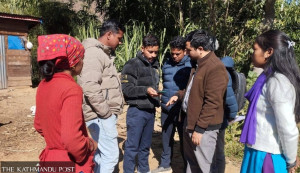Karnali Province
Annual yarsagumba rush leaves Dolpa classrooms empty
Most students, parents, and even teachers have headed to the highlands in search of quick cash from the prized caterpillar fungus.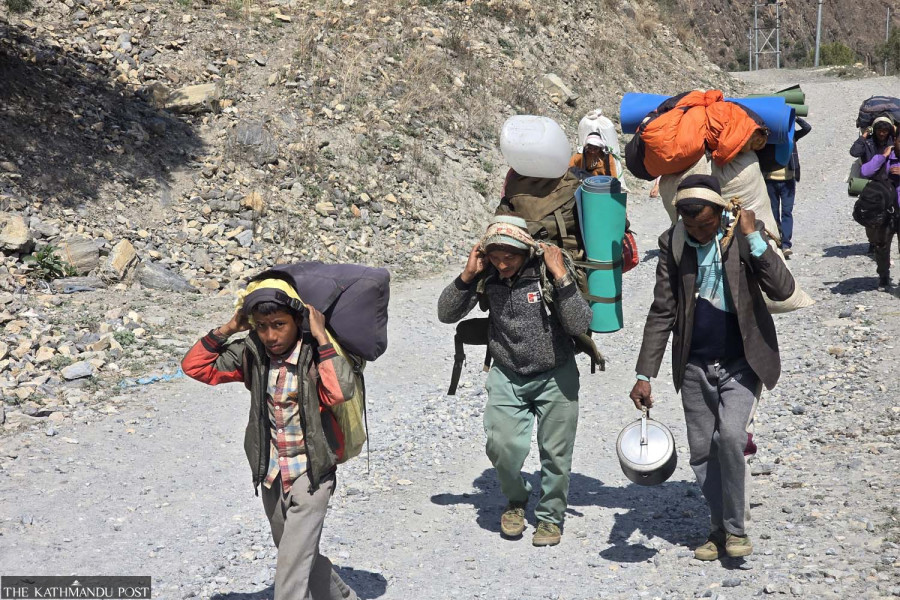
Ramchandra Neupane
Come yarsagumba (Ophiocordyceps sinensis) harvesting season in Dolpa, a remote mountain district in Karnali province, and classrooms fall silent. Students, their parents and even teachers, head to the highland meadows to cash in on the prized caterpillar fungus.
This year is no different. More than 14,500 students have been reportedly affected as entire communities—including teachers and children—head to the highlands to collect the fungus, valued for its purported medicinal properties.
At Adarsha Secondary School in ward 7 of Thulibheri Municipality, teachers continue to report for duty, but classrooms remain empty. “Since the beginning of Jestha (mid-May), the number of students has started to drop. Now, it's practically zero,” said Balkrishna Dangi, headmaster of the community school. Although the school remains open for administrative work, learning has come to a grinding halt. There are around 750 students in Adarsha Secondary School.
At Janaprabha Secondary School in ward 10 of Tripurasundari Municipality, where more than 700 students are enrolled, the story is much the same. “Sometimes only 30 to 35 students show up. Teachers wait, but there’s no one to teach,” said headmaster Tej Bahadur Giri.
According to the Education Development and Coordination Unit in Dolpa, all 116 schools in the district are affected to some extent. Many have shut down completely as parents lock their homes and take their entire families to the highlands.
Yarsagumba is harvested before the monsoon season, between May and June, when tens of thousands of people swarm over the Himalayan foothills in several districts of Sudurpaschim, Karnali and Gandaki provinces to collect the moth caterpillar fungus. Yarsagumba is the main source of income for many families in the area. It is found at altitudes between 3,540 to 5,500 metres.
Dil Prasad Rokaya, acting chief administrative officer of Thulibheri Municipality, confirmed that while the municipality has not officially ordered schools to close, learning has stalled due to lack of students. “For many families, yarsagumba is the only source of meaningful income. Even poor students depend on yarsagumba collection to pay their school fees. It’s more of a compulsion than a choice,” he explained.
There are 27 schools in Thulibheri Municipality alone. With students absent, many teachers are also taking advantage of the downtime—some heading to the highlands themselves, while others travel outside the district to visit their hometowns.
Harsha Prasad Chaulagain, head of the district education office, acknowledged that the seasonal disruption to education is a longstanding issue. “When schools repeatedly shut down, it doesn’t just hinder learning—it harms the long-term academic future of these children,” he said. He believes the solution lies in collective action by stakeholders, including parents and political leaders.
Chaulagain suggests forming a local consensus to minimise the academic impact during the yarsagumba season, perhaps by reducing the harvest period or ensuring part-time school operations. “Local representatives argue that this is a critical income season, but if local governments truly prioritise education, they can find a way forward,” he added.
The problem is particularly severe in upper Dolpa, where the yarsagumba fields are closer to villages. Here, entire schools shut down, and children as young as six are seen trekking to the highlands. According to Rupalal Budha, a local resident from ward 1 of Tripurasundari Municipality, families rely on this one-month harvest to cover expenses for the whole year. “Even though collecting yarsagumba is dangerous—and sometimes fatal—children still go. Some even suffer altitude sickness or fall off cliffs,” he said.
Despite the risks, the financial lure is strong. A child between six and ten years old can reportedly earn Rs10,000 to 30,000 in a single season. Each Yarsagumba piece sells for Rs500 to 1,000, while a kilogramme can fetch between Rs1.5 to 3 million, depending on quality and demand. Most of the harvest is exported to China.
Since the yarsagumba pastures officially opened on May 18, tens of thousands of people have migrated to the meadows in search of the prized fungus, leaving Dolpa’s villages deserted. According to Shey Phoksundo National Park officials, these pastures lie above 3,000 meters and are home to the rare caterpillar fungus long used in Tibetan medicine for its supposed healing properties.
Devendra Raj Neupane, a yarsagumba trader, who has been in the business for the past 15 years, confirms that Dolpa remains a key supplier to the Chinese market. “Dolpa’s yarsa is of high quality and in great demand,” he said.
While yarsagumba harvesting is a vital lifeline for many in this remote district, the annual disruption to education raises serious concerns about the long-term well-being and opportunities for Dolpa’s children. Unless local governments and communities come together to find a balance between livelihood and learning, the cycle is likely to continue.




 7.12°C Kathmandu
7.12°C Kathmandu
